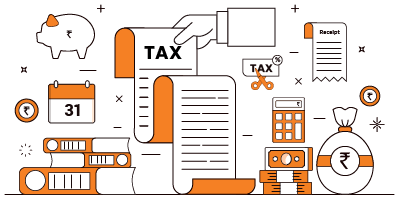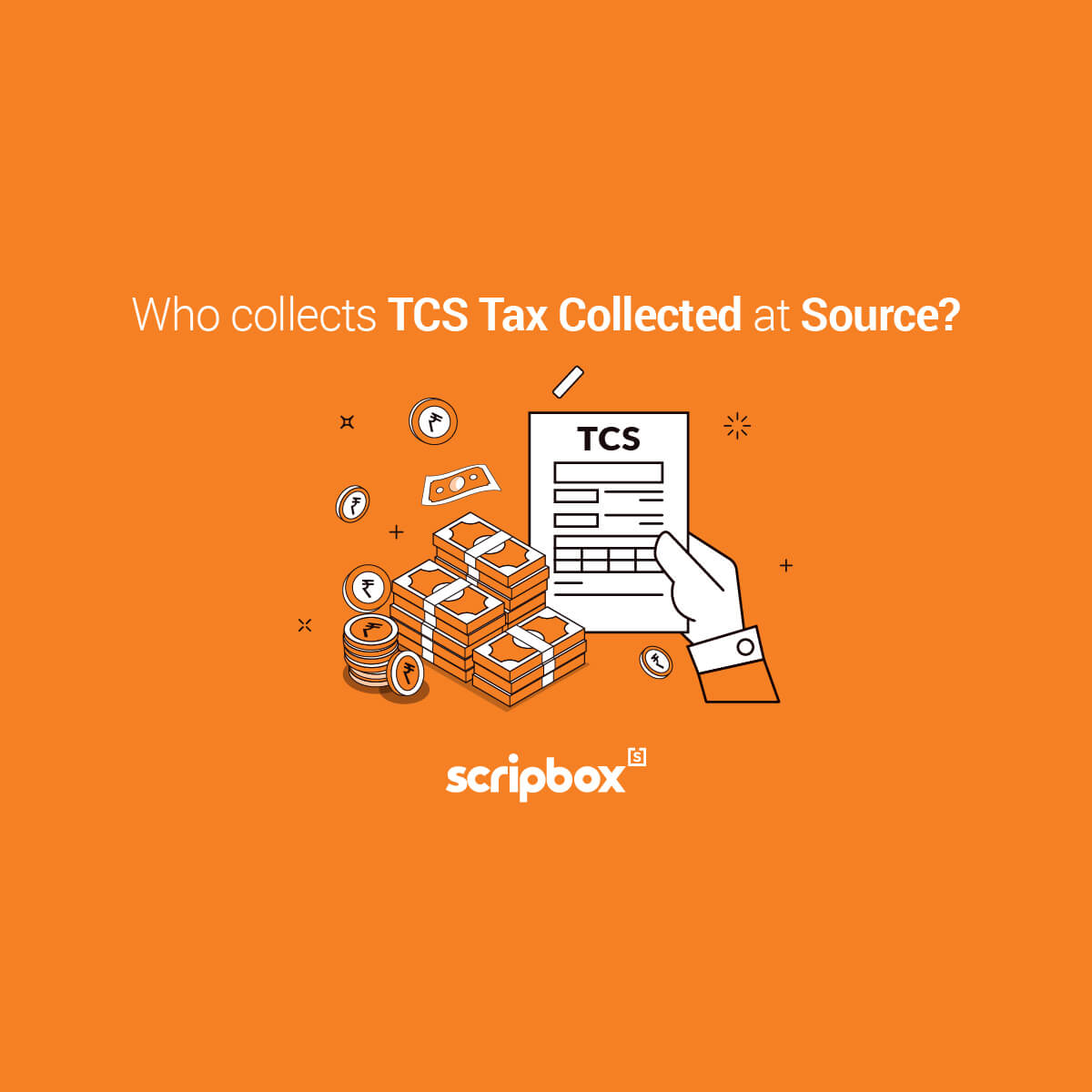The Income Tax Department has launched its new e-filing website on the 7th of June, 2021. This new portal will soon replace the existing portal www.incometaxindiaefiling.gov.in. The new portal is user-friendly and focuses on making the entire e-filing experience easy, quick, and seamless. The ITR-1 and ITR-4 (online and offline), and ITR-2 (offline) are currently available on the new portal. The new IT portal will provide free-of-cost ITR preparation software for the month of June 2021. Immediate processing of ITRs will lead to quick income tax refunds for the taxpayers. A single dashboard will represent all the tax-related interactions.
Income Tax plays an important role in the growth and development of a country. It is a system through which the government collects the revenue from the public and uses the same towards the advancement and development of the country’s infrastructure, education, national security, etc.
We can classify the taxes into two categories:
1. Direct Tax
This kind of tax is levied on the income of the individual or corporate directly by the government of India. A direct tax can be further divided into the following 2 subcategories:
- Income Tax: Income tax is paid by the individual or Hindu Undivided Family and other taxpayers apart from the companies. The rates at which the tax needs to be paid are specified in the income tax act 1961.
- Corporate Tax: This is the tax that is to be paid by the companies in the case of profits. For the purpose of calculating the profits, the income tax act allows various benefits to the corporates in terms of claiming an expenditure. The final profit arrived at after deducting all the eligible expenses qualifies as income on which tax needs to be paid.
2. Indirect Tax
This type of tax is first collected by a third party and is then paid to the government of India. A simple example of this would be the restaurant services wherein the customer pays the bill inclusive of tax to the restaurant and the same is paid further to the government by them.
There were various types of indirect tax levied across the states in India at varied rates on different products. Such taxes have now been subsumed with the introduction of the Goods & Service Tax(GST). This has been done by the government to bring uniformity and reduce the burden of the businesses.
Income Tax Basics:
Income tax is levied on the total income of the taxpayer. A taxpayer can be an individual(both resident and non-resident), corporates, Hindu Undivided Family, Association of Persons (AOP), etc. Depending on the residential status of the taxpayer a certain income can either be added to the total income of the assessee or can be removed from their total income.
As per the provisions of the income tax act, the total income of a taxpayer is divided among five categories or head of income. The following are the five heads of income:
- Salary Income: Salary or pension earned by an employee is classified as income under this head.
- Income from house property: Rental income earned by the taxpayer on letting out a property is classified as income under this head.
- Income from capital gain: Income from the sale of a capital asset such as shares, mutual funds, house property, etc.
- Profits and gains from business & profession: Income from carrying on any business or profession is classified as income under this head.
- Income from other sources: This is a residual category wherein if any income is not falling in the above four heads are classified. For example, interest on savings bank deposits.
Taxpayers of Income Tax in India:
Income tax is levied on the total income of every person. For the purpose of the income tax act, a person has been divided into seven categories of assesses. This classification is important as the income tax is levied on the income of the person. The following are the categories as defined in the income tax act 1961:
- Individual
- Hindu Undivided Family(HUF)
- Company
- Firm
- Association of Persons(AOP)
- Body of Individuals(BOI)
- Local Authority
- Artificial Judicial Persons
For each of the above categories of person, tax is levied separately on each of them as per the provisions of the income tax act. For individuals, HUF, AOP, and BOI taxpayers are taxed on the basis of the tax slab they fall under. The slab rates are provided in the act and are subject to change by the government. In the case of companies and firms, they are taxed at a rate of 30%. An additional surcharge is also levied on every category of the taxpayer if the total income crosses a specified threshold.
Budget 2020, provides an opportunity to choose between a new-tax regime or continue with the old-tax regime. The tax rates are different on the basis of the regime chosen by the individual. Let us discuss the same.
Income Tax Slabs Under the New Tax Regime FY 2023-24 (AY 2024-25)
| Income Tax Slab | Tax Rate Individual Taxpayers |
| Up to Rs. 3 lakh | Nil |
| Rs. 3 lakh to 6 lakh | 5% |
| Rs. 6 lakh to 9 lakh | 10% |
| Rs. 9 lakh to 12 lakh | 15% |
| Rs. 12 lakh to 15 lakh | 20% |
| Rs. 15 lakh & above | 30% |
Note: if the total income is under 5 lakh, rebate under section 87A is allowed and is limited to Rs. 12,500. This means that if the total tax payable is less than Rs.12,500, no tax is required to be paid.
The amount of tax payable by an individual as per the above slab rate will be increased by a health and education cess of 4%
Furthermore, the above slab rate comes with a few restrictions. An individual has to let go of certain deductions and exemptions if he/she wants to opt for the new tax regime.
The following are the exemptions & deductions which the taxpayer has to give up:
- House Rent Allowance(HRA)
- Leave Travel Allowance(LTA)
- Conveyance Allowance
- Helper Allowance
- Relocation Allowance
- Professional Tax
- Special Allowance
- Interest on housing loan allowed under section 24
- Deductions under Chapter VI-A like 80C, 80D, 80E, etc. However deduction under 80CCD(2) can still be claimed.
The option to choose between the new and the old tax regime should be exercised before the due date of filing of return.
Income Tax Slabs Under Old Tax Regime FY 2020-21 (AY 2021-22)
| Income Tax Slab for Individuals | Tax rates for individual below 60 years of age |
| Up to Rs. 2.5 lakh | Nil |
| Rs. 2,50,001 to Rs. 5,00,000 | 5% of the total income exceeding Rs. 5,00,000 |
| Rs. 5,00,001 to Rs. 10,00,000 | Rs. 12,500 + 20% of the total income exceeding Rs. 5,00,000 |
| Above 10,00,000 | Rs. 1,12,500 + 30% of the total income exceeding Rs. 10,00,000 |
The tax calculated as per the above slab rates will be increased by a health and education cess of 4%. Furthermore, a tax rebate under section 87A is allowed to an individual taxpayer up to a maximum of Rs. 12,500 for individuals having a total income of Rs. 5,00,000.
Explore: Income Tax Slab Rates FY 20-21
Income Tax collection:
There are various mechanisms deployed by the government in order to collect the taxes well in advance throughout the financial year. The following are a few ways in which the government collects the taxes from the taxpayer:
- Advance & self-assessment tax.
- Tax deducted at source(TDS).
- A tax collected at source(TCS).
The collection of the taxes through various above means is monitored by the income tax department who regulates the same through their policy. The IT department is also responsible for ensuring that taxpayers remit the correct tax which they are liable to pay and ensure they do not avoid paying tax.
Types of ITRs, Due dates and applicable to taxpayers
ITRs or Income tax return forms are documents that need to be filed with the department. It contains the personal details of the taxpayer along with their income details. This helps the department to evaluate the correctness of the taxpayer’s data vis a vis the information available with the department. We will now discuss the various types of returns along with their applicability and the due date to file those returns.
The following are the types of income tax returns, their applicability, and the due date of filing.
| Type of ITR | Description | Applicability | Due date of filing of return |
| ITR 1 | This is applicable to an individual, who being a resident has a total income up to Rs. 50 lakh.Income from one house property.Income from other sources. Example: Agricultural income up to Rs. 5000. | Resident individual(other than not ordinarily resident) | 31st July |
| ITR 2 | ITR 2 is used in the below cases: Total income is greater than 50 lakhs including the income mentioned in ITR 1.Income from capital gains. Income from more than one rental property.Foreign income and foreign assets. | For individual and HUFs not having income from profits and gains from business or profession | 31st July |
| ITR 3 | ITR 3 is used in the below cases:Every income considered under ITR 2.Income from business or profession.Income from being a partner in a firm.Presumptive income, if the same is above Rs. 50 lakh. | For individual and HUFs having income from profits and gains from business or profession | 31st July |
Other Income Tax Returns.
| Type of ITR | Description | Applicability | Due date of filing of return |
| ITR 4 | Income from a business where such income is computed on a presumptive basis under Section 44AD (i.e. Gross Turnover up to Rs. 2 crores) or Section 44AE (income from goods carriage Up to ten vehicles); or Income from Profession where such income is computed on presumptive basis under Section 44ADA (i.e. Gross receipt up to Rs. 50 lakh); or Income from Salary/ Pension; or Income from One House Property; or Interest income and/or income from family pension taxable under Other Sources. | For individuals, HUFs and firms(other than LLP) who are resident in India and have total income up to Rs. 50 lakh. Income from business or profession computed under section 44AD, 44ADA & 44AE. | 31st July |
| ITR 5 | ITR 5 is applicable to the below assesses: A partnership firm Limited Liability Partnership(LLP) Association of persons (AOP) Body of individual(BOI) | Persons other than the below: Individual Company HUF and Person filing ITR 7. | 30th September |
| ITR 6 | Applicable to companies who are not claiming exemption under section 11. | Applicable to companies who are not claiming exemption under section 11. | 30th September |
| ITR 7 | This Return Form can be used by persons including companies who are required to furnish return under:section 139(4A) section 139(4B) section 139(4C) section 139(4D). | 30th September |
How to file an income tax return?
Filing your income tax return might look like a daunting task that might easily confuse people. The income tax department has worked hard on their website to make the return filing process as easy as possible.
The process of filing the return electronically on the website or through income tax department utility is considered as e-filing of return. This method is not only efficient but also saves a lot of time and money for the taxpayer.
We will not understand the return filing process in detail:
Step 1: visit the income tax website. Below is how the introductory page would look like:
Step 2: If you are a registered user, click on “Log in here” and the below screen will appear.
Please note that in case you have not registered on the website, you will first need to register yourself by clicking on the “Register yourself” section.
Step 3: After you log in to the website, you can start filing the income tax return. It is to be noted here that the income tax liability will be computed by the software itself. In case you are already aware of how to calculate the tax liability, you can compare the same from the department portal and check for any discrepancies.
Step 4: Download the form 26AS from the income tax portal. This will show the details of all the tax that has been deducted on your PAN and filed by the other party. This will ultimately be reduced from the total tax liability of the assessee.
Step 5: Depending on the type of income, one needs to select the tax return applicable to them. This is an important step and should be done very carefully.
Step 6: After filling in all the details on the website, or the income tax department utility, the same needs to be validated which will return in the generation of an XML file. This file needs to be uploaded, if the same is generated from the utility, and needs to be filed with the department.
Step 7: After filling in the relevant details and uploading the XML file, the same needs to be submitted. Post this, the return will be successfully submitted provided it does not have any validation errors. After the return is successfully filed, it needs to be validated through the various options available like aadhar OTP, electronic verification code (EVC), etc.
How to Pay Income Tax Online?
You can pay the Income tax online through the website of https://www.tin-nsdl.com/. A taxpayer can follow the below steps to pay their taxes:
- Firstly, Login to https://www.protean-tinpan.com/
- Under the services section, click on the “e payment: pay taxes online” section.
- A new tab will open up, wherein various forms for e-payment are provided. A taxpayer needs to select “ITNS 280” to pay the self assessment tax.
- After clicking on the “proceed” section, a new tab will appear. Here a taxpayer must to select certain mandatory fields like tax applicable, type of payment, mode of payment, etc.
- For example, if you are an individual paying your self assessment tax, you need to select 0021-Income tax (other than companies) in the tax applicable along with a 300-self assessment tax under the type of payment.
- As a next step, the taxpayer needs to confirm the details of the payment which will be sent and processed at the bank’s end.
- A payment challan will be created on the successful completion of the payment. This will contain the challan identification number, date of the payment, and the details of the bank.
- Lastly, at the time of ITR filing you must mention the details of the challan.
Offline Payment of Income Tax
The income tax department has provided the facility to pay tax both online and offline. In order to pay the taxes offline, say through the bank’s branch, you must follow the below steps:
- Download the applicable challan from the given link
- Fill out all the required information very carefully. Remember, since this is an offline form, a taxpayer needs to be careful of the mandatory fields that are to be filled along with the focus of not submitting any incorrect information.
- The details will include information such as PAN, assessment year, tax amount etc.
- Once the details are filled in, taxpayers can submit this to their respective bank’s branch. To be more cautious, it is always advisable to request the bank staff to verify the challan once before proceeding with the payment. This serves as an additional check to see if any information is missed out!
Income Tax Refund vs Rebate:
When an assessee files the return for a financial year, there can be either two possible scenarios:
- Tax will be payable by the assessee. This will happen in a case where their tax liability is more than the tax already paid by them in the form of advance tax, tax deducted at source, etc.
- Tax will be refunded to the assessee. This would happen in a case where the tax paid by the assessee through advance tax, tax deducted at source, etc. is more than his actual tax liability.
Both the above-mentioned cases warrant the assessee to time the returns timely. It is also important to ensure that the correct bank details are provided at the time of filing of the return. This will ensure that once the return is processed, the refund is credited correctly to the account of the taxpayer.
In order to provide relief to the taxpayers who are in the 5% tax slab. The income tax act provides relief under section 87A. It is applicable to an assessee whose total income does not exceed Rs. 5,00,000 (ole regime) or Rs 7 lakhs (new regime)
However, the rebate under section 87A is not available in respect of the tax payable @10% on long-term capital gains tax under section 112A of the income tax act.
Resident vs Non-resident Taxpayer
The residential status becomes an important point to consider in income tax. For all the purposes, taxpayers are classified into the below categories on the basis of their residential status:
- Resident and ordinarily resident
- Resident but not ordinarily resident
- Non-resident
The above classifications need to be done for each previous year. It is quite possible that a person was resident and ordinarily resident in year 1 and a non-resident in year 2.
Under the provisions of the income tax act, an individual will be a resident if he satisfies any of the following conditions:
- He has been in India during the previous year for a total period of 182 days or more or
- He has been in India during the 4 years immediately preceding the previous year for a total period of 365 days or more and has been in India for at least 60 days in the relevant previous year.
If any of the above conditions are not satisfied, the individual is said to be a non-resident. Furthermore, as per the recent amendments, an individual, being a citizen of India, and having a total income(excluding income from foreign sources) exceeding Rs. 15 lakhs during the previous year would be deemed to be a resident in India. However, this would not apply in a case where the individual has been classified as a resident as per the above conditions.
Only individuals and HUF can be “resident but not ordinarily resident” in India. A not-ordinarily resident is one who satisfies any one of the below conditions:
- An individual has been non-resident in India in any 9 out of the 10 previous years.
- If such an individual has during the 7 previous years has been in India for a period of 729 days or less.
- An individual is an Indian citizen or person of Indian origin, having a total income, other than foreign income, exceeding Rs. 15 lakh during the previous year, who has been in India for 120 days or more but less than 182 days during the previous year.
Related Articles
- 1. Direct Tax
- 2. Indirect Tax
- Income Tax Basics:
- Taxpayers of Income Tax in India:
- Income Tax Slabs Under the New Tax Regime FY 2023-24 (AY 2024-25)
- Income Tax Slabs Under Old Tax Regime FY 2020-21 (AY 2021-22)
- Income Tax collection:
- Types of ITRs, Due dates and applicable to taxpayers
- How to file an income tax return?
- How to Pay Income Tax Online?
- Income Tax Refund vs Rebate:
- Resident vs Non-resident Taxpayer























Show comments